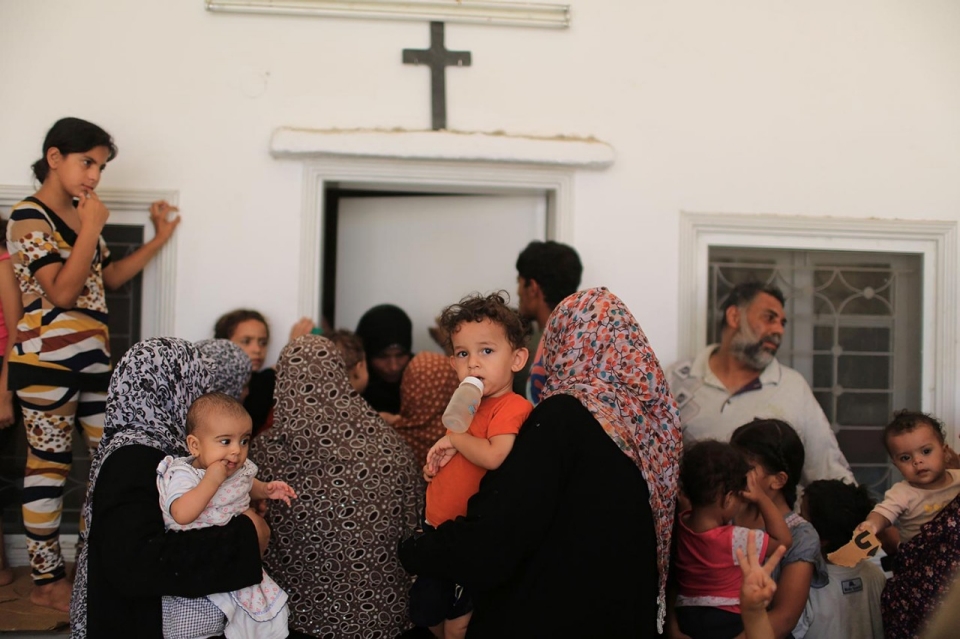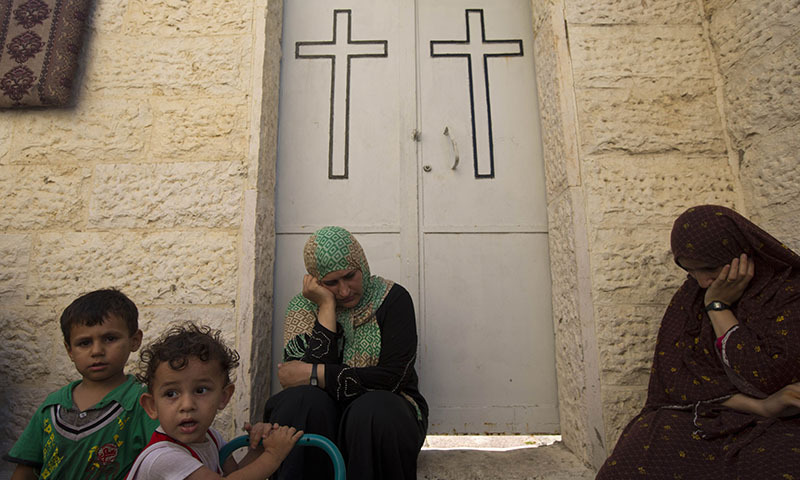Originally published by Ma’an News Agency on August 13, 2014.
The first day the bombs began to fall on Gaza, Refqa al-Hamallawy called a meeting in her office at the al-Najd Developmental Forum where she is president to formulate a plan of action.
As the windows of the Gaza City office were rocked by thuds both near and far from the explosions of Israeli airstrikes, the employees and volunteers of the community organization made a decision that they would stay at their posts for as long as the Israeli assault continued.
Whatever happened, they promised, the organization would keep its doors open to all affected by the crisis.
Thirty-eight days later, al-Hamallawy and the workers at al-Najd are still working overtime, like thousands of others in the Gaza Strip who have dropped everything to help their fellow Palestinians in their time of need.
Even as international organizations have expanded operations to address the unprecedented humanitarian crisis, it is the work of ordinary Gazans likes al-Hamallawy that has made a world of difference to the hundreds of thousands of needy and displaced across the still-besieged coastal enclave.
“At the beginning of the war, a lot of the help we were giving was basic stuff,” al-Hamallawy told Ma’an via telephone. “We were making sure people had access to their medical needs and getting toys for children.
“But as the war dragged on and the Israeli aerial assault turned into a full-scale ground invasion less than two weeks in, the scale of the crisis escalated dramatically.Displaced ‘wandering throughout the streets’
By Aug. 3, the number of displaced in Gaza had skyrocketed to nearly 485,000, of whom just over half found shelter at UN-designated sites.”There were people wandering all throughout the streets,” al-Hamallawy recounted.

“What could we do?”
The organization promptly invited dozens of families to move into their headquarters in a relatively safe area in central Gaza, opening their arms to scores who had fled their homes in the eastern neighborhoods on foot, taking only what they could carry.As the numbers grew, volunteers at the organization began taking families into their own homes as well, crowding as many as possible to help shelter those with nowhere to go.
“It was very difficult but we had to endure it, because no one else was able to do anything or help people,” al-Hamallawy told Ma’an. “Maybe the UNRWA and Red Cross were trying as well, but even they couldn’t do enough under the conditions.”
“They were taking in people but look what was happening to them,” she added. “Israel bombed schools and hospitals as well.
“Nearly one-third of Gaza’s population were given orders by Israeli forces to leave their homes over the course of the assault. If they stayed, Israel warned, the military would consider them combatants and not hesitate to kill them.
Since all the borders remained closed, however, a deluge of hundreds of thousands poured out of the eastern and northern areas to seek shelter in any nook or cranny they could find closer to the coast.
At the height of the displacement crisis at the beginning of August, however, the UN Office for the Coordination of Humanitarian Affairs estimated that only just over half of all the displaced were in UN shelters. The shelters, meant to hold around 500 people each, were stretched far beyond capacity and were holding an average of 2,800.
It was up to ordinary Gazans to deal with the overflow, and dozens of organizations like al-Najd as well as religious institutions and ordinary people worked overtime to provide for the displaced as much as possible.Seeking sanctuary
The St. Porphyrios Orthodox Church in Gaza’s Old City was another crucial place of refuge for thousands of Gazans. The church provided refuge for more than 3,000 people during the worst days of the Israeli bombardment, hosting 800 in the church itself and 2,500 in shops and homes in the surrounding community.
The director of religious relations at the church said that hundreds of families streamed toward the church fleeing intense shelling in the nearby neighborhood of Shujaiyya as well as Beit Hanoun.
“When we began to feel that people were in danger and the people started coming, we opened or doors to them to allow them to stay in this safe place,” the director, who spoke on condition of anonymity, told Ma’an via telephone.
Although the church is a center of community life for Gaza’s more than 1,500 Christian Palestinians, it employs only three people full-time.
The director told Ma’an, however, that the church became a center for other organizations working to aid the displaced, and despite the continued shelling community members from nearby also gathered there to do their part to help.
Hundreds crowded into the Sunday school rooms as well as church offices to sleep at night, and when the shelling outside was too heavy to leave, church officials and volunteers slept there beside them.Despite the fear, however, there were moments of joy, the director recalled.
“When Eid al-Fitr came,” he said, “we celebrated together and brought toys and sweets for the children,” noting that during the Ramadan month of fasting, church officials served the evening iftar meal and the displaced said their prayers in the church’s outer sanctuary.

‘Misery and defeat’
Both the church official as well as al-Hamallawy from al-Najd association said that the majority of the hundreds of people they hosted returned to their neighborhoods only to find their homes destroyed and their possessions scattered in the rubble.”They can’t go home, they have nothing there anymore,” al-Hamallawy told Ma’an. “What are they supposed to do?”
OCHA estimates that at least 65,000 Gazans no longer have livable homes to return to. With concrete and the vast majority of building supplies still heavily restricted by the Israeli blockade, however, it is unclear how rebuilding will happen.
“If there is a ceasefire, this could help people,” al-Hamallawy said. “But our primary demand is the lifting of the siege. This would help all of our issues — unemployment, reconstruction, everything.”
“This is the demand of the people, not the government. It is the people who are deprived by this siege, not Hamas,” she added.
The director at St. Porphyrios also noted that although the church was ready and prepared to continue helping people find new apartments, the future was still uncertain.”The poor people here feel so much misery and defeat,” he said, sighing.
“But hopefully God will look upon us and end the war. And God willing, bring peace to all of the Middle East.”
